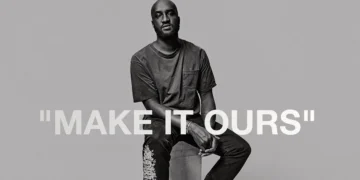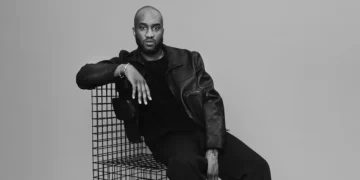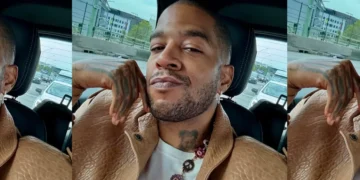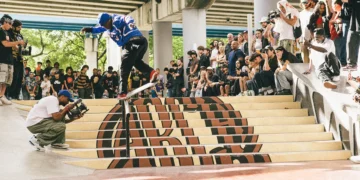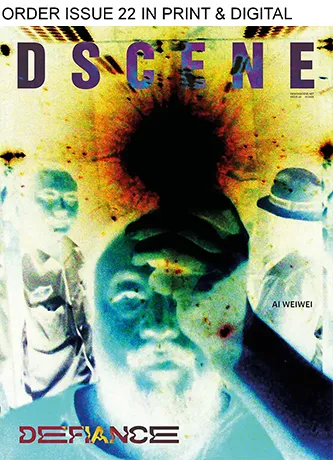
In Make It Ours, Pulitzer Prize–winning critic Robin Givhan delivers a clear-eyed, sharply observed study of Virgil Abloh’s impact on fashion, culture and the long-protected boundaries of creative legitimacy. Scheduled for release on June 24, 2025, the book arrives with the urgency of a cultural document, mapping how Abloh’s presence unsettled the industry’s hierarchy while expanding the possibilities of who gets to define taste, luxury, and access.
BOOKS
Givhan, known for her incisive writing on race, power, and aesthetics, approaches Abloh’s story with clarity and urgency. She does not merely retell the narrative of a man who became the first Black artistic director at Louis Vuitton in its 164-year history. She interrogates the system he cracked open. Abloh’s appointment in 2018 wasn’t just historic, it was disruptive. He didn’t tiptoe into fashion’s elite rooms. He walked in wearing Nikes and carrying a DJ’s sensibility, daring to ask what it meant to belong in a space built to exclude.
The book’s title is deliberate. Make It Ours reflects the ethos that guided Abloh’s work, one that rejected the gatekeeping of luxury and embraced a democratic, remix-driven design approach rooted in streetwear, hip-hop, and Black identity. Givhan traces this philosophy back to its source: a boy born to Ghanaian immigrants in Rockford, Illinois, who studied engineering and architecture before redefining fashion as a multidisciplinary platform. Through collaborations with Kanye West, the founding of Off-White, and his subversive designs at Louis Vuitton, Abloh changed the very vocabulary of style.

What Givhan does best is show how Abloh wasn’t merely interested in clothes. He saw fashion as a language, one that could communicate resistance, affirmation, and possibility. His work blurred boundaries: between high and low, artist and consumer, Blackness and luxury. She details how a screen-printed T-shirt could challenge the relevance of couture, and how a sneaker could signal belonging in a world designed to exclude.
Givhan structures the book with precision, balancing interviews with Abloh’s family, collaborators, and contemporaries, figures like Ozwald Boateng and, inevitably, Kanye West, with her own reflections on fashion’s colonial and capitalist foundations. There’s reverence in her writing, but never indulgence. Abloh is presented as curious and tireless, yes, but also strategic and aware of his place within systems built to resist him.
At its core, Make It Ours is a critique of fashion’s gatekeeping and a portrait of a designer who refused to accept its limits. Givhan emphasizes how Abloh’s rise was not the result of the industry making space for him, but of him making space for himself. He arrived without formal training in tailoring, without the traditional résumé, but with an understanding of how culture moves, and how he could move with it, and through it.
The book also confronts the discomfort many in fashion had, and still have, with Abloh’s popularity and influence. For some, he was too commercial. For others, too conceptual. But for millions of fans and aspiring creatives, he was proof that being outside the establishment was no longer a liability. He challenged what luxury could look like and who it was for.
Givhan’s prose is elegant and cutting. She shows how Abloh’s legacy can’t be reduced to Off-White’s zip ties or Louis Vuitton’s multi-color streetwear sets. His true revolution was philosophical: a collapsing of the distance between consumer and creator, between exclusivity and authenticity. She captures how Abloh’s aesthetic reflected a deeper ambition, to democratize design and affirm that taste, style, and genius are not inherited, but created.
When Louis Vuitton lit up the Miami sky with “Virgil Was Here” in drones after his death in 2021, it marked both a moment of mourning and a recognition of lasting influence. Make It Ours preserves that influence with clarity, framing it as a cultural shift rather than a temporary phenomenon. The book speaks to more than fashion insiders, it invites anyone interested in the intersections of identity, power, and style to engage with Abloh’s legacy.
Robin Givhan has written the definitive portrait of Virgil Abloh: a designer, yes, but also a cultural architect who built bridges where walls once stood. In doing so, she’s also written a story about the future of fashion, and who deserves to shape it.
